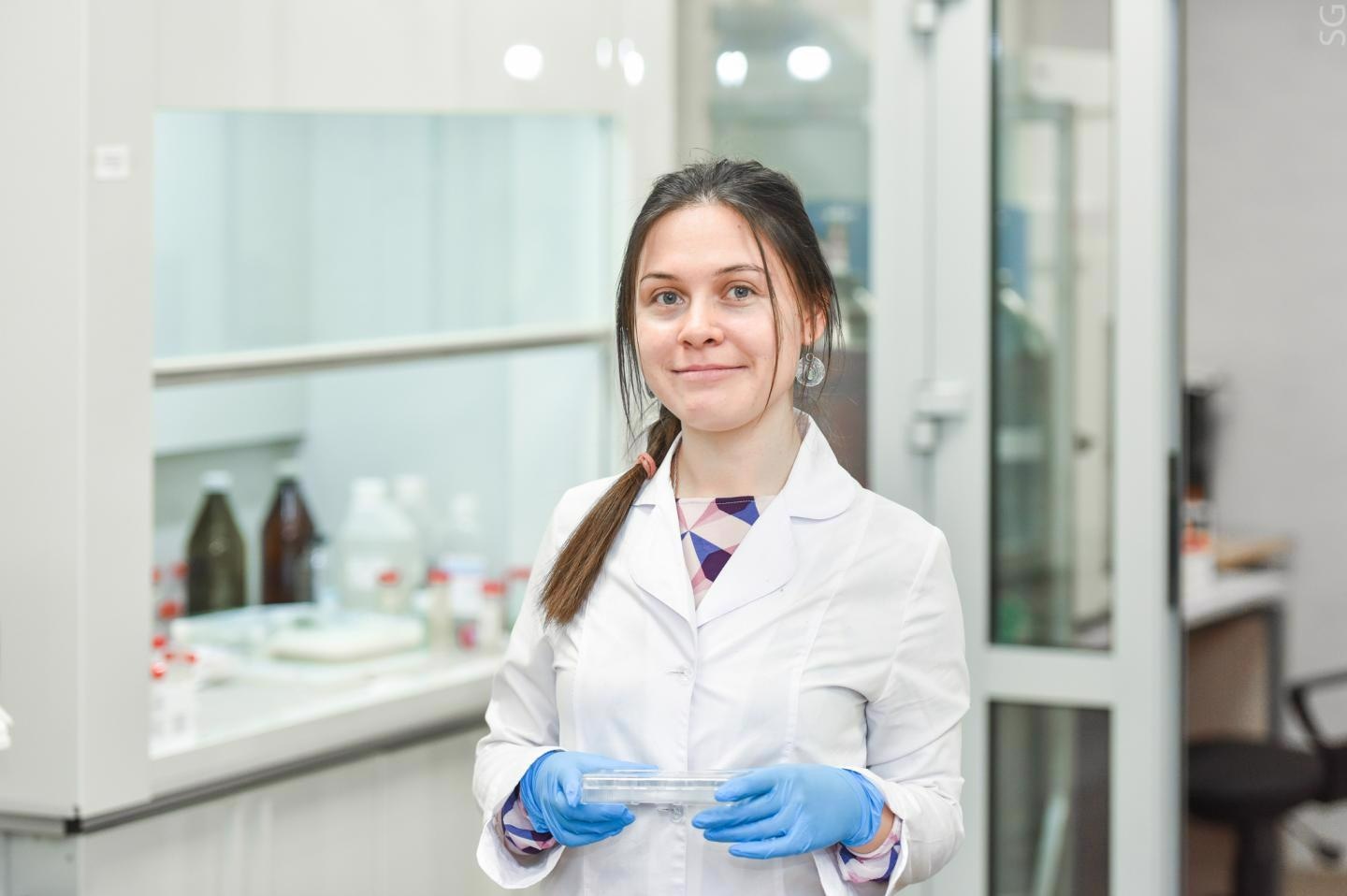Apr 13 2021
Young researchers from the National University of Science and Technology MISIS (NUST MISIS) have developed multilayer antibacterial coatings featuring an extended effect and a versatile range of action.
 The author of the work, a researcher at the NUST MISIS Inorganic nanomaterials laboratory Elizaveta Permyakova. Image Credit: Sergey Gnuskov/NUST MISIS.
The author of the work, a researcher at the NUST MISIS Inorganic nanomaterials laboratory Elizaveta Permyakova. Image Credit: Sergey Gnuskov/NUST MISIS.
The coating has been prepared using modified titanium oxide and various antiseptic components.
In modern implantology, the coatings can be used as a safeguarding layer to prevent concomitant complications—implant rejection or inflammation. The study findings have been published in the international scientific journal Applied Surface Science.
At present, antibacterial coatings are being investigated actively, with the growing search for alternatives to conventional antibiotics. They can be used on implants, which prevents inflammation due to nosocomial infections.
However, for the scientific community, it has been challenging for several years to make antibacterial, yet bioactive and biocompatible, surfaces and the 'dream materials' have not been achieved.
At the NUST MISIS Laboratory of Inorganic Nanomaterials, an innovative multilayer coating has been created by young researchers. This coating produces the protective properties of antibiotics, anticoagulants, biopolymers and nanoparticles.
The antibiotic and silver nanoparticles offer an antibacterial effect, and heparin in the coating inhibits bacterial cells from attaching to the surface of the tissue, which decreases the amount of antibacterial agent needed.
The method of obtaining a multilayer coating is a combination of several technologies: first, using magnetron sputtering, a thin bioactive nanostructured coating of the TiCaPCON composition was obtained, then silver particles were introduced into the coating by ion implantation, then a biopolymer layer, which plays the role of a carrier for bactericidal molecules of heparin and gentamicin in the preparation, was applied.
Elizaveta Permyakova, Study Author and Researcher, Inorganic Nanomaterials Laboratory, National University of Science and Technology MISIS
The researchers carefully investigated the chemical composition of the resulting coating layers by making use of X-ray and infrared photoelectron spectroscopy. They discovered that the addition of therapeutic components takes place across the entire plasma-applied polymer layer.
The researchers joined hands with collaborators from the State Research Center for Applied Microbiology and Biotechnology to analyze the effect of each kind of antibacterial component (heparin, gentamicin and silver ions) on the biocompatibility and antibacterial activity of the developed coatings.
In vitro studies show that the coatings exhibited cellular compatibility and showed outstanding bactericidal efficacy of up to 99% against the antibiotic-resistant Escherichia coli bacterial strain.
The combination of several bactericidal fillers and silver ions with a bioactive coating made of titanium oxide modified with calcium and phosphorus ensured biocompatibility and a long—up to 7 days—antibacterial effect of the resulting coatings.
Elizaveta Permyakova, Study Author and Researcher, Inorganic Nanomaterials Laboratory, National University of Science and Technology MISIS
The researchers note that the novel coatings can be utilized as an antibacterial implant modifier, thereby enabling it to expedite implantation by decreasing the threats of associated inflammation and triggering the growth of osteoblastic cells.
At present, the team is planning to move to the preclinical development of the coatings.
Journal Reference:
Permyakova, E. S., et al. (2021) Different concepts for creating antibacterial yet biocompatible surfaces: adding bactericidal element, grafting therapeutic agent through COOH plasma polymer and their combination. Applied Surface Science. doi.org/10.1016/j.apsusc.2021.149751.